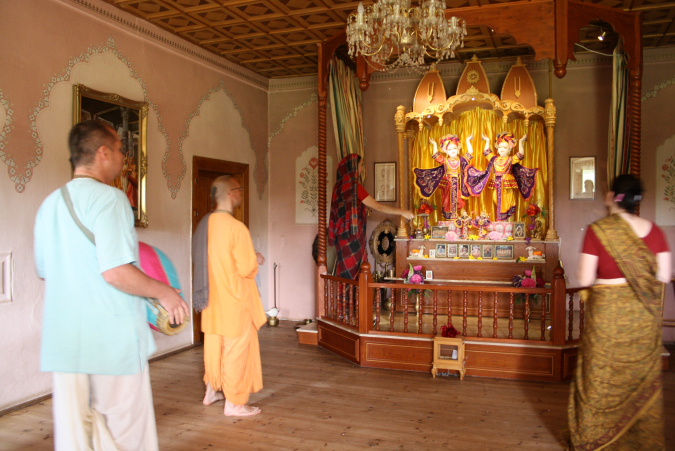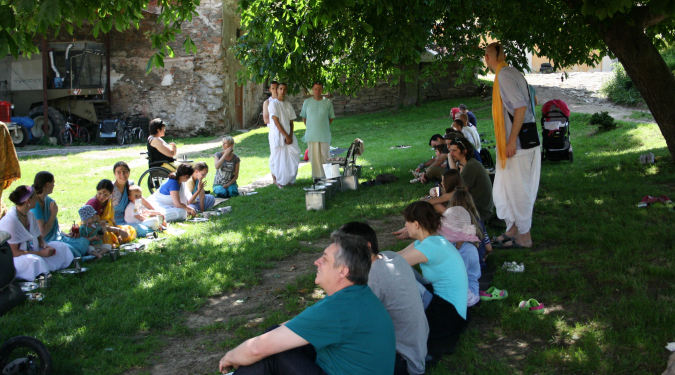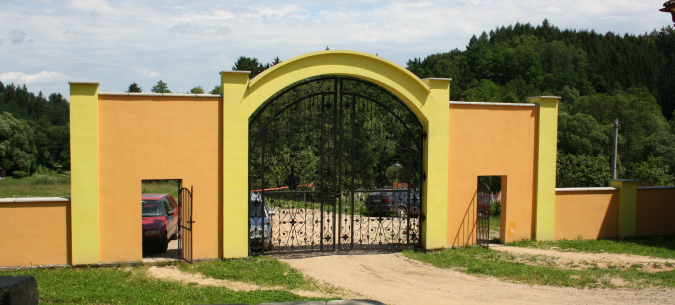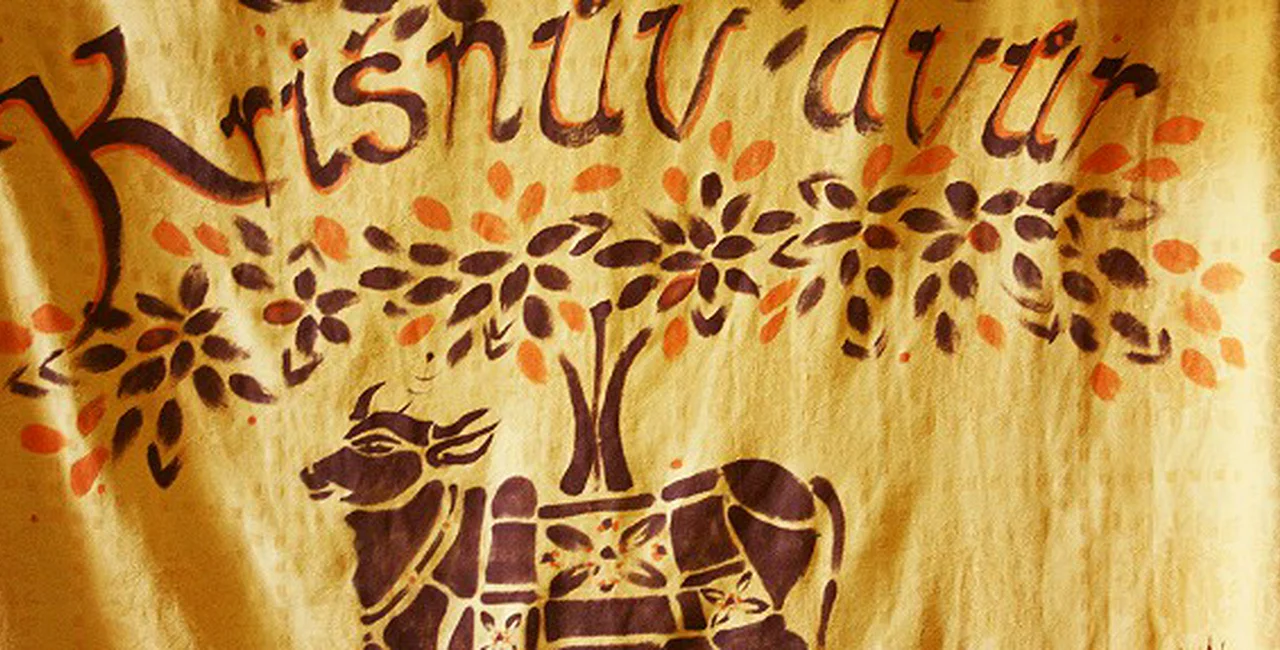Incense and rhythmic chanting filled the temple as one devotee made a fire offering at the main altar. From my wallflower position in the back, I saw a one-year-old boy toddle in with his mother; both touched their foreheads to the floor in reverence before joining the group of skirt-clad followers. The drumbeat quickened, the music building to a crescendo, and I discovered my body swaying along of its own accord.
I had just witnessed my first kirtan—a kind of devotional chanting using ancient Sanskrit mantras—at Farma Krišnův dvůr. This farm near Benešov is home to fifteen Hare Krishna followers (including three families), and they invite the public to come for a cultural program, a meal, and a farm tour every Sunday afternoon.

(c) Fernando Contreras
Lured there by the homemade cookies they sell in the Kulaťák farmer’s market, I really had no idea what to expect. Now, walking down the dirt path leading from Městečko u Benešova (the local train station) to the farm, I felt my apprehension mounting with each step. What would I find there? Would I feel welcome? Was I dressed properly?
The farm was founded in 1990, though the Hare Krishna movement was present even during communist times albeit underground. After the Velvet Revolution, when three enthusiastic devotees started publicly distributing books and pamphlets around the country, their community began to grow. Today, Hare Krishna is an officially recognized religion by the Czech state and they have four temples nationwide with around 200 devout followers.
“We are an open society, anyone can visit us, as long as you respect our basic principles while here,” said Priya-kirti das, a monk from a neighboring village . This means no drinking, smoking, eating meat, gambling, or illicit sex. But he was quick to point out it’s not like a monastery where you must give up everything and join. Followers of Hare Krishna can have a family and go to work as long as they apply the teachings of Krishna to their everyday life.

(c) Fernando Contreras
Back at the farm, I soon realized my worries were for nothing. After passing through the ornate, yellow and orange gate, I was greeted by several people who switched to fluent English when they heard my foreign accent, and they seemed genuinely happy to welcome me to their home. Nobody so much as batted a judgmental eye at my t-shirt and shorts outfit. Nobody tried to convert me to Hare Krishna. I wasn’t even obligated to attend the kirtan and short sermon (though I highly recommend it).

(c) Fernando Contreras
After the sermon, the grown-ups congregated outside under the leafy expanse of two chestnut trees. We chit-chatted while keeping an eye on the little ones romping around the grounds, my own 18-month-old playing in the sandbox along with the others. Tantalizing smells wafted out the kitchen window, their tentacles reaching my nose, making my stomach rumble. As if on cue, the regulars started rolling out strips of carpet, arranging them in a long, rectangular shape. We were instructed to take a seat and wait to be served. (They didn’t have to tell me twice.)
It wasn’t lunch, it was a feast—curried vegetables and potatoes, balls of sticky rice flavored with dill, a fruit and yogurt mixture, a tangy pasta salad, a dessert made from elder blossoms and another from cream and coconut. I later learned that prior to eating, all food is offered to Krishna in a brief ceremony called prashadam. This process alters the food so it nourishes your soul as well as your body.

(c) Fernando Contreras
“We feed the people spiritual things through their stomachs,” said Madhu, a resident monk on the farm.
A lot of the ingredients—milk for making yogurt and cheese, wheat and an assortment of vegetables—are courtesy of the farm, and they also have a stone mill for grinding their wheat into flour (which you can purchase at their restaurant chain Govinda or via their website). “Someday we’d like to be completely self-sufficient in food production and energy, but it’s not as easy as it looks, especially dealing with all the officials to get different permits,” Madhu said.
Madhu, who has been a monk for ten years, used to hand out books and pamphlets, dressed in his orange robes, in the Anděl area, but nowadays he’s usually too busy for that. People on the street often asked him how he knew that Hare Krishna was right for him, to which he answered with a simple parable:
“Look at this,” a man says to a boy.
“What is it?”
“A mango,” the man replied. “Do you know what it tastes like?” The boy touched it, smelled it and then thought for some time.
“No,” he finally answered. “I cannot truly know unless I try it.”

(c) Fernando Contreras
Even if you’re not interested in “trying the mango,” I recommend at least making it out to Farma Krišnův dvůr to try the lunch feast—you won’t be disappointed. I went there not knowing what to expect, and whether it was the power of the rhythmic chanting or the soulful food, I left the farm with a clearer head and a happy belly.
Farma Krišnův Dvůr
When: Every Sunday at 1:00
Where: Farma Krišnův Dvůr, 257 01 Postupice
Cost: Free, recommended donation of 100 CZK per person for the meal
Directions: By train approximately 3-5 minutes walk from Městečko u Benešova station;
GPS -49.73102601588661,14.804849249633797
http://www.krisnuvdvur.cz/












 Reading time: 4 minutes
Reading time: 4 minutes 
























